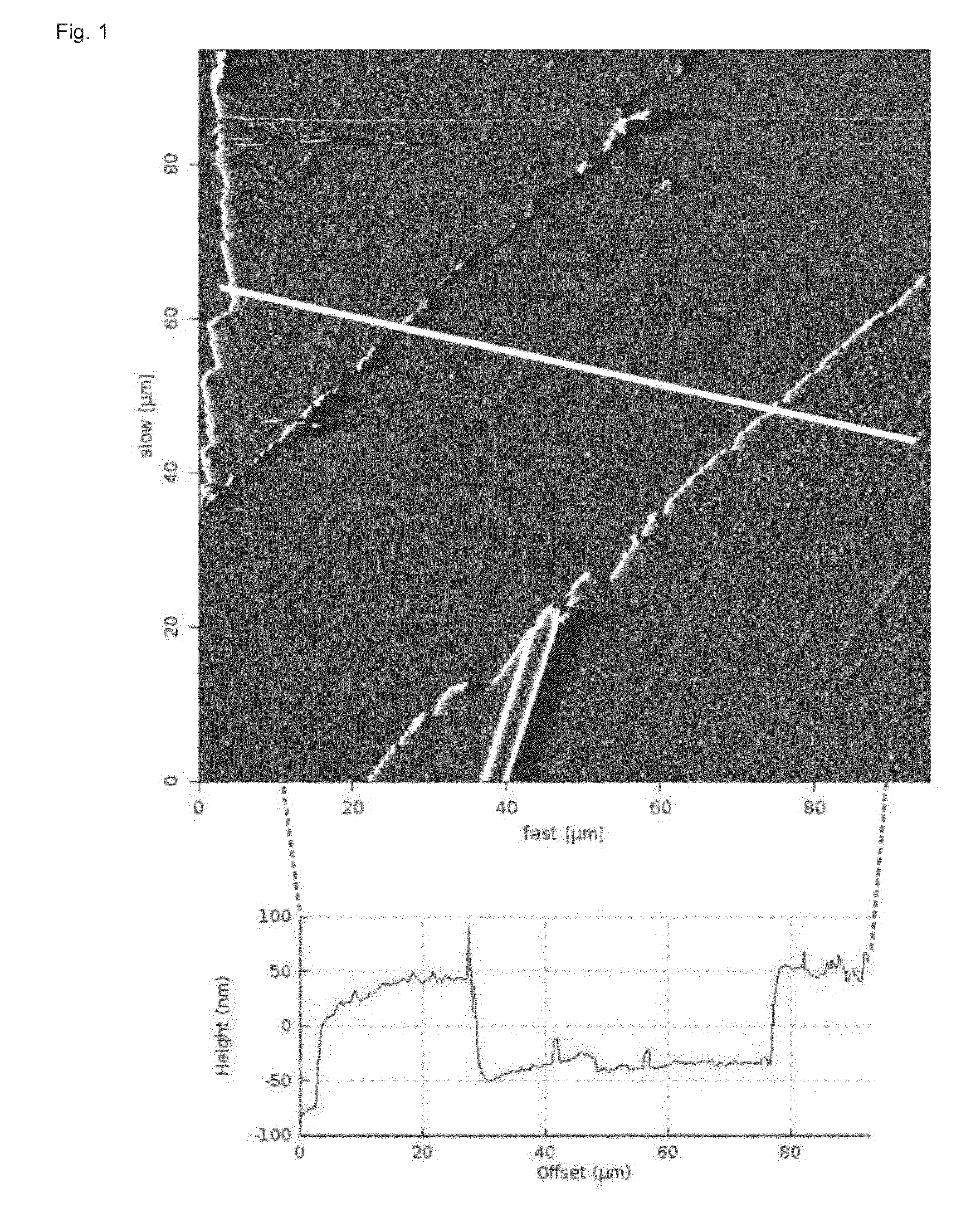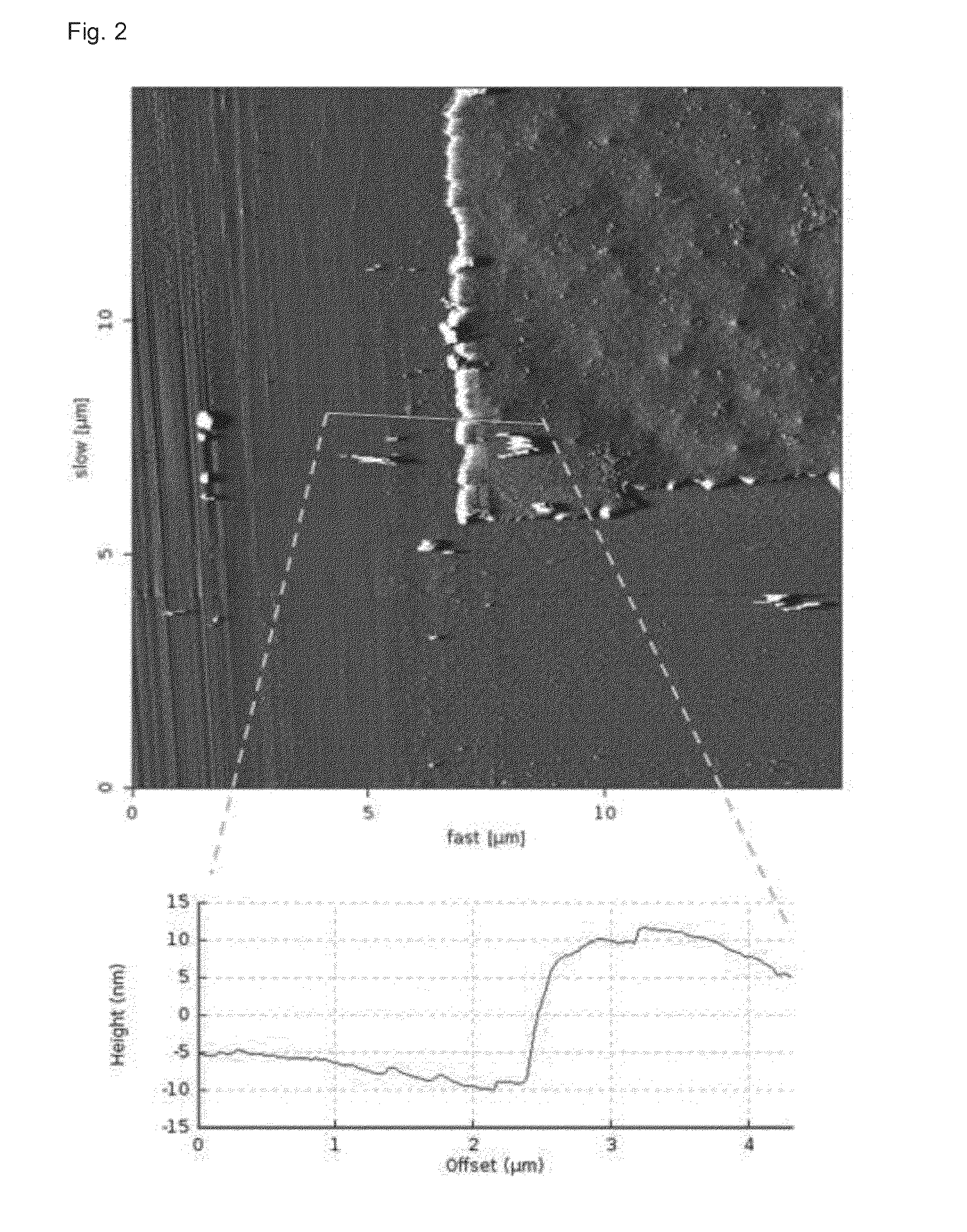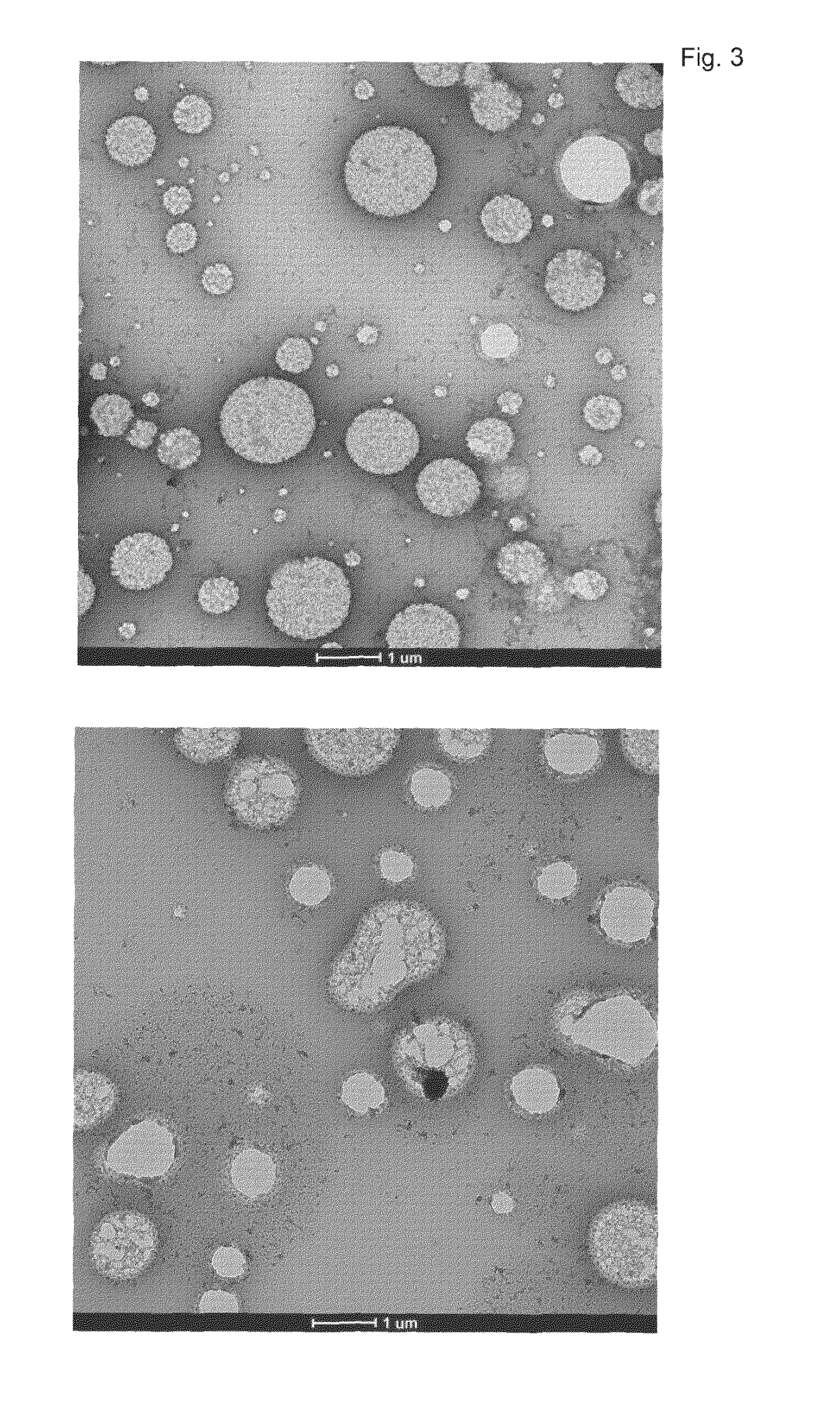Porous Nanomembranes
a nano-membrane and nano-fiber technology, applied in the direction of reverse osmosis, moulds, coatings, etc., can solve the problems of losing the properties of a self-supporting membrane and poor tensile strength, and achieve the effect of maintaining stability and high porosity
- Summary
- Abstract
- Description
- Claims
- Application Information
AI Technical Summary
Benefits of technology
Problems solved by technology
Method used
Image
Examples
example 1
Fabrication of a Non-Porous Nanomembrane with an Aspect Ratio≧500.000
[0143]On a silicon wafer (SiMat, Kaufering, Germany) a self-standing nanomembrane was spin coated. A silicon wafer is precleaned with ethanol and water and is hydrophilized by glowing (PELCO easiGlow™ Glow Discharge Cleaning System; Ted Pella Inc., Redding, Calif., USA; 60 seconds) or plasma cleaning (Plasma Prep2; GaLa Gabler Labor Instrumente Handels GmbH, Bad Schwalbach, Germany) before spin coating of the sacrificial layer. A uniform thin film from 5% (w / w) aqueous Poly(sodium 4-styrenesulfonate) (PSSNa, Mw 70.000 g / mol) solution; is spin coated (Spin Coater P6700; Specialty Coating Systems Inc., Indianapolis, Ind., USA) according to the following program: Step1: ramp time of 5 sec / 2000 rpm for 3 sec; Step2: ramp time of 2 sec / 3000 rpm for 1 sec; Step3: ramp time of 1 sec / 3000 rpm for 60 sec; final ramp time of 10 seconds. The nanomembrane is manufactured in the following way: The components of the epoxide (epo...
example 2
Fabrication of a Porous Nanomembrane with an Aspect Ratio of 500.000 with 1% Epoxide-Precursor Solution and Aqueous PSSNa as Pore Template
[0148]The mixed 1% (w / w) epoxide-precursor solution as described in example 1 is mixed at the volume ratio PSSNa / epoxide-precursor of 1:5 with a 20% (w / w) PSSNa-water solution (Mw PSSNa: 1.000.000), dissolved at 50° C. under constant stirring) to obtain an emulsion by homogenization with an ultrasonic probe (Branson Sonifier 250 power module, Emerson, Danbury, Conn., USA; for 30 seconds with 50% duty cycle and output control at 6) or dispersion for 15 seconds by Polytron® (Polytron 1200 C, Kinematica, Luzern, Switzerland). The resulting turbid epoxide / aqueous-PSSNa emulsion is spin coated on the silicon wafer bearing the respective sacrificial layer as described in example 1. The membrane is annealed for 30 minutes at 50° C. and delaminated in water. In order to dissolve the PSSNa contents properly, the membrane is floating on the water surface fo...
example 3
Fabrication of a Porous Nanomembrane with an Aspect Ratio of 500.000 with 1% Epoxide-Precursor Solution with Inclusion Bodies as Pore Template
[0152]Inclusion bodies are prepared according to the protocol described by Marston and Hartley (Methods in Enzymology, Vol. 182, p. 264). In order to produce highly pure inclusion bodies, they are washed three times by centrifugation at 12.000 g, followed by resuspension in water and centrifugation. The clean inclusion bodies were resuspended in water and lyophilized for 48 h.
[0153]The 1% epoxide-precursor solution, as described in example 1, is mixed with 10 mg / ml lyophilized inclusion bodies (e.g.: EDDIE-GFP-IBs) in order to produce highly porous nanomembranes. The generated mixture is homogenized with ultrasonic probe (Branson Sonifier 250 power module; Branson, Danbury, Conn., USA; for 30 seconds at 50% power output and power position of 6). The resulting epoxide-IB dispersion is spin coated like described in example 1 (Spin Coater P6700; ...
PUM
| Property | Measurement | Unit |
|---|---|---|
| Thickness | aaaaa | aaaaa |
| Thickness | aaaaa | aaaaa |
| Nanoscale particle size | aaaaa | aaaaa |
Abstract
Description
Claims
Application Information
 Login to View More
Login to View More - R&D
- Intellectual Property
- Life Sciences
- Materials
- Tech Scout
- Unparalleled Data Quality
- Higher Quality Content
- 60% Fewer Hallucinations
Browse by: Latest US Patents, China's latest patents, Technical Efficacy Thesaurus, Application Domain, Technology Topic, Popular Technical Reports.
© 2025 PatSnap. All rights reserved.Legal|Privacy policy|Modern Slavery Act Transparency Statement|Sitemap|About US| Contact US: help@patsnap.com



